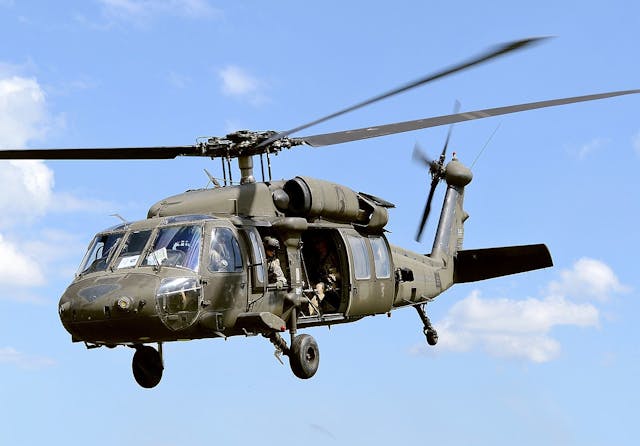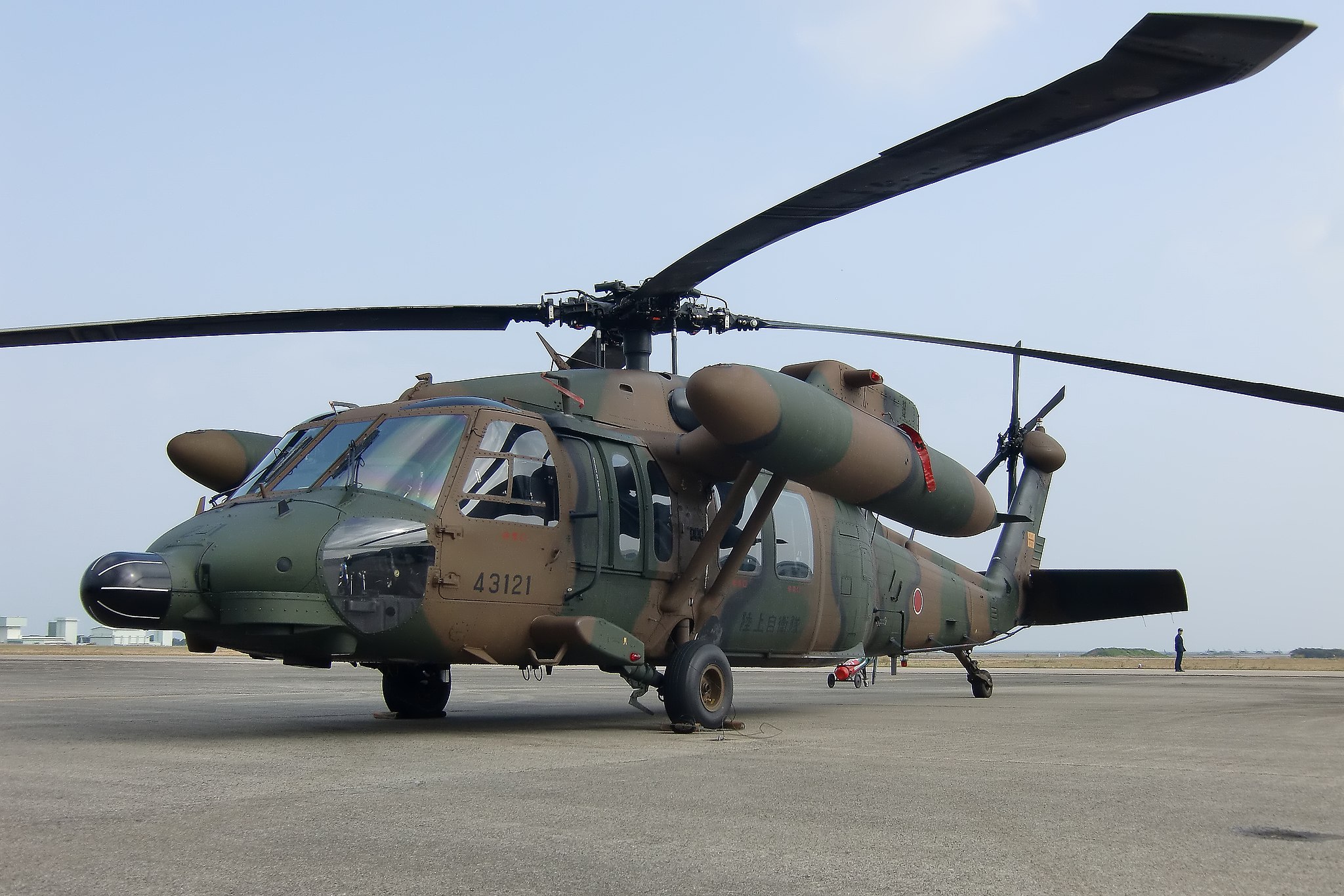The UH-60 Blackhawk and Its Effect On Modern Warfare and Helicopter Design
The UH-60 Blackhawk and Its Effect On Modern Warfare and Helicopter Design
Blog Article
Comprehensive Review of the UH-60 Blackhawk Helicopter
The UH-60 Blackhawk helicopter, a hallmark of modern-day military air travel, has actually played an important duty in diverse functional movie theaters because its introduction in the 1980s. As we discover its intricate background, design specs, and technical advancements, it ends up being noticeable that the Blackhawk's influence prolongs far beyond the combat zone.
History and Growth
The UH-60 Blackhawk helicopter has actually constantly been a keystone of U.S. armed forces aviation given that its intro in the late 1970s. Developed by Sikorsky Airplane, the Blackhawk was made to satisfy the Military's requirement for a functional utility helicopter that might perform an array of missions in various atmospheres. UH-60 Blackhawk. The development procedure started in 1972, with the first model flying in 1974
Its functional debut came during the 1980s, where it was promptly recognized for its agility, capability, and rate to deliver troops and cargo effectively. The Blackhawk's performance in the 1983 Grenada intrusion and subsequent operations solidified its reputation as a reliable workhorse for the united state Military. Over the years, the helicopter has actually undertaken various upgrades and variants, adapting to developing military demands, including the enhancement of advanced avionics and weapon systems.

The Blackhawk's design has additionally progressed to serve different branches of the armed forces and allied forces, showcasing its flexibility. Today, it stays an essential element of united state army operations and remains to be a recommended choice for rotary-wing aeronautics across the globe, showing its enduring tradition and ongoing significance in contemporary war.
Layout and Specifications
Engineered for efficiency and convenience, the UH-60 Blackhawk helicopter includes a durable style that enhances its functional abilities. With a length of 64 feet and a rotor diameter of 53 feet, the Blackhawk is designed to fit a wide range of goals.
The helicopter is powered by two General Electric T700-GE-701C engines, each supplying 1,800 shaft horsepower, which guarantees high degrees of dependability and performance in diverse atmospheres. The rotor system is a four-blade, totally articulated design that allows for excellent maneuverability and security, also in adverse problems.
Furthermore, the UH-60 incorporates advanced avionics and trip control systems that boost situational recognition and pilot control. The cabin is designed for fast reconfiguration, enabling it to sustain different goal profiles, from army transport to medical evacuation. Overall, the design and specs of the UH-60 Blackhawk demonstrate a commitment to functional excellence and adaptability in the area.

Missions and duties
With its robust layout and advanced capabilities, the UH-60 Blackhawk helicopter serves a plethora of roles across various army operations. Originally established for troop transportation, the Blackhawk has evolved to execute a vast selection of goals, consisting of medical emptying, search and rescue, and logistical assistance. Its versatility permits it to run in varied environments, from metropolitan landscapes to rugged surfaces.
In battle situations, the Blackhawk is essential for placing and extracting special procedures pressures, giving them with the mobility required to implement their missions efficiently. Furthermore, the helicopter can be equipped with advanced communication and avionics systems, boosting its function as a command and control system in dynamic combat scenarios.

Technological Developments
Incorporating sophisticated modern technologies has actually substantially improved the efficiency and capacities explanation of the UH-60 Blackhawk helicopter. The incorporation of innovative avionics systems, consisting of digital flight control and improved situational awareness screens, has actually boosted pilot navigating and decision-making in complicated atmospheres. These systems allow real-time information handling, assisting in better communication and coordination throughout missions.
Moreover, the Blackhawk's airframe has undertaken substantial upgrades, using composite materials that minimize weight while raising structural integrity. This modification adds to improved fuel effectiveness and operational array. The helicopter is also outfitted with advanced propulsion systems that supply better power and integrity, guaranteeing ideal performance in diverse conditions.
In addition, the integration of modern sensors and weapon systems has expanded you can check here the Blackhawk's flexibility. Enhanced targeting capabilities and advanced danger discovery systems enable for reliable involvement in fight situations, enhancing mission success prices.
Worldwide Effect and Heritage
The UH-60 Blackhawk helicopter has made an extensive influence on altruistic initiatives and army procedures worldwide because its introduction in the late 1970s. Its convenience and advanced modern technology have actually allowed it to serve in numerous functions, including army transport, medical emptying, and logistical assistance (UH-60 Blackhawk). The helicopter's performance in fight situations has redefined aerial flexibility, enabling pressures to respond swiftly and successfully to vibrant battlefield problems
Around The World, the Blackhawk has been deployed in many disputes, from the Persian Gulf to the Balkans, showcasing its flexibility to varied settings. Its function in altruistic objectives, such as calamity relief and search-and-rescue procedures, has more strengthened its credibility as a reputable possession in dilemma situations.
The tradition of the UH-60 prolongs past its military applications; it has actually likewise affected helicopter layout and operational doctrine worldwide. Its success has prompted various other countries to develop similar aircraft, boosting worldwide aviation standards and functional capabilities. As the Blackhawk continues to evolve with modern upgrades, its influence on both army and noncombatant air travel continues to be substantial, ensuring its location in history as one of one of the most renowned helicopters of its time.
Conclusion
The UH-60 Blackhawk helicopter stands as a testament to innovative design and functional armed forces application. Its design and capacities have considerably shaped contemporary airborne operations, boosting army wheelchair and operational performance. The ongoing advancements in technology proceed to solidify the Blackhawk's function in modern warfare and humanitarian initiatives. As an outcome, the Blackhawk has actually left an enduring mark on armed forces aeronautics, affecting future helicopter designs and redefining tactical resource strategies throughout the world.
The UH-60 Blackhawk helicopter, a characteristic of modern-day military aviation, has played an indispensable duty in varied functional theaters because its intro in the 1980s - UH-60 Blackhawk.The UH-60 Blackhawk helicopter has consistently been a foundation of U.S. armed forces aeronautics given that its introduction in the late 1970s.Engineered for efficiency and convenience, the UH-60 Blackhawk helicopter features a durable layout that enhances its functional abilities.With its durable style and advanced capacities, the UH-60 Blackhawk helicopter serves a wide range of roles throughout numerous army operations.The UH-60 Blackhawk helicopter has made an extensive impact on army procedures and humanitarian efforts worldwide since its introduction in the late 1970s
Report this page